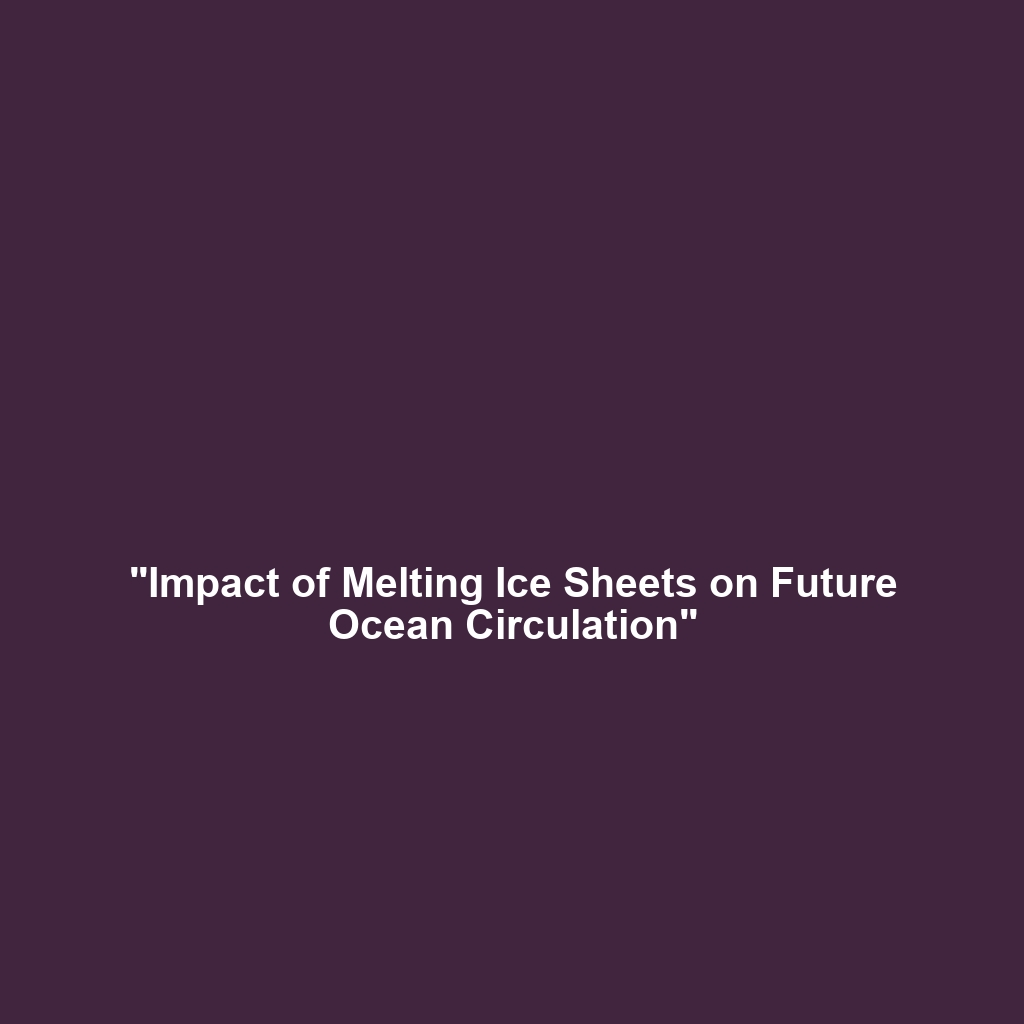How Sediment Records Help Reconstruct the History of the Earth’s Ice Sheets
Introduction
Sediment records play a crucial role in reconstructing the history of the Earth’s ice sheets, offering invaluable insights into past climate conditions. Understanding how these natural archives of physical and chemical information inform our knowledge of glacial and interglacial periods is significant for grasping broader trends in climate history. By examining sediment layers, scientists can discern patterns of ice sheet behavior over millennia, aiding in current climate change predictions and policies. This article delves into the methodologies, applications, challenges, and future directions regarding sediment records and their impact on climate history.
Key Concepts
The Role of Sediment Records
Sediment records are formed by the gradual accumulation of materials on the Earth’s surface over time. This accumulation includes organic and inorganic particles that can offer clues about environmental conditions when they were deposited. Key principles include:
- Stratigraphy: The study of sediment layers, or strata, which reveals chronological sequences of Earth’s climatic shifts.
- Paleoenvironmental Reconstruction: The method of using sediment data to reconstruct ancient environments, particularly in relation to ice sheet dynamics.
- Proxies: Biological, chemical, and physical indicators found within sediment that help infer past climate conditions and ice cover extent.
These concepts fit within the category of climate history by enhancing our understanding of Earth’s past climate mechanisms influenced by ice sheets.
Applications and Real-World Uses
Understanding how sediment records help reconstruct the history of the Earth’s ice sheets has significant real-world applications:
- Climate Modeling: Sediment records are essential in developing models that predict future climate scenarios based on historical data.
- Policy Development: Insights from sediment studies guide governmental and environmental agencies in climate change mitigation strategies.
- Coastal Management: Analysis of ice sheet histories informs projections about sea-level rise, crucial for coastal community planning.
These applications demonstrate how sediment records are used in climate history to enhance environmental resilience and strategic forecasting.
Current Challenges
Despite their usefulness, challenges exist in studying sediment records related to ice sheets:
- Data Integrity: Sediment layers can be disturbed by bioturbation or erosion, complicating accurate reconstructions.
- Temporal Resolution: Some sediment deposits may not provide continuous records, leading to gaps in the historical data.
- Interpretation Variability: Different interpretations of sediment data can lead to competing hypotheses about ice sheet behavior.
These issues highlight the ongoing need for rigorous methods in the study of sediment records and climate history.
Future Research and Innovations
Future research promises to enhance our understanding of how sediment records reconstruct the history of the Earth’s ice sheets:
- Advanced Dating Techniques: Innovations in dating sediment layers could provide more precise timelines of ice sheet evolution.
- Integrative Approaches: Combining sediment analysis with remote sensing technologies can yield a comprehensive view of ice sheet dynamics.
- Climate Modeling Integration: Enhancements in computational power and climate models may allow for more accurate predictions based on sediment data.
These advances position the field for groundbreaking discoveries in climate history.
Conclusion
In summary, sediment records are invaluable for reconstructing the history of Earth’s ice sheets, providing crucial data for understanding past climate shifts within the context of climate history. As we face unprecedented climate challenges, the insights derived from these records become increasingly relevant. For further exploration of climate history and related topics, consider reading our articles on future climate projections and current ice sheet studies.


